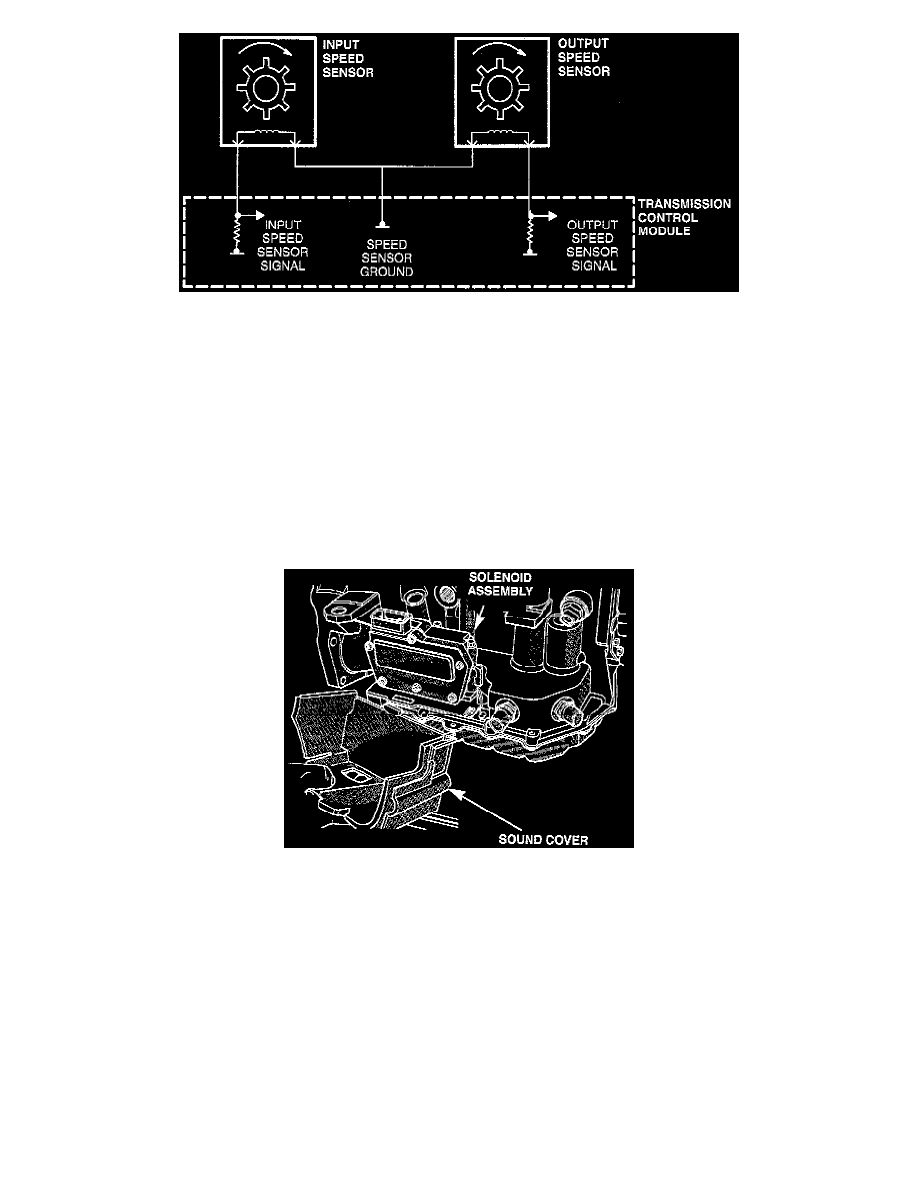Caravan AWD V6-201 3.3L (1991)

The input speed sensor provides information to the TCM on how fast the torque converter turbine is spinning. The sensor is located on the front side of
the transaxle case, close to the bellhousing. The Input Speed Sensor is a two wire magnetic pickup sensing device. As the teeth of the input clutch hub
pass by the sensor coil and magnet, an AC voltage proportional to shaft rotation is induced into the coil of the sensor. This AC signal is sent to the TCM.
The TCM interprets this information as input shaft rpm. This information is also compared to the output shaft speed and the engine speed signal to
determine the following:
-
Planetary gears operating ratio
-
Torque converter clutch slippage
-
Torque converter element speed ratio
The output speed sensor is located on the same side of the transaxle case as the input speed sensor, but much closer to the end of the transaxle. The
output speed sensor generates a signal from the rotation of the rear planetary carrier park pawl lugs passing by the sensor. When the output speed sensor
signal is received by the TCM, the signal is compared to the input speed signal to determine gear ratio, detect clutch slippage, etc.
Pressure Switches (Hard-Wired)
The Low/Reverse, Overdrive and 2-4 pressure switches are all located in the Solenoid Pack Assembly. These switches indicate to the TCM if hydraulic
problems occur in the clutch circuits. The pressure switches do not tell the TCM how much pressure is in the circuit, though they open at approximately
11 psi and close at approximately 23 psi. They simply indicate that pressure exists or does not exist. This information verifies that the solenoids are
operating correctly and if hydraulic pressure is available to determine if a loss of pump prime has occurred or to engage 1st gear if the shift lever
electrical signal is incorrect.
Transmission Temperature Sensor (Hard-Wired) (Beginning 1996)
The Transmission Temperature Sensor is used to monitor the temperature of the transmission fluid. Power for the sensor is supplied by the TCM. Actual
transmission fluid temperature is based on the resistance value of the temperature sensor located in the Transmission Range Sensor (TRS). The primary
temperature inputs used by the TCM are the Transmission Temperature Sensor, Battery Temperature Sensor, ECT Sensor and in-gear run time. The
engine must be running to get accurate temperature readings.
NOTE: A transmission will either have a TRS or a combination PRNDL switch and park/neutral position switch. A transmission with a TRS cannot
have a PRNDL switch or park/neutral position switch.
If the sensor fails, the TCM defaults to a fluid temperature which is calculated from a combination of inputs. The calculated fluid temperature is
